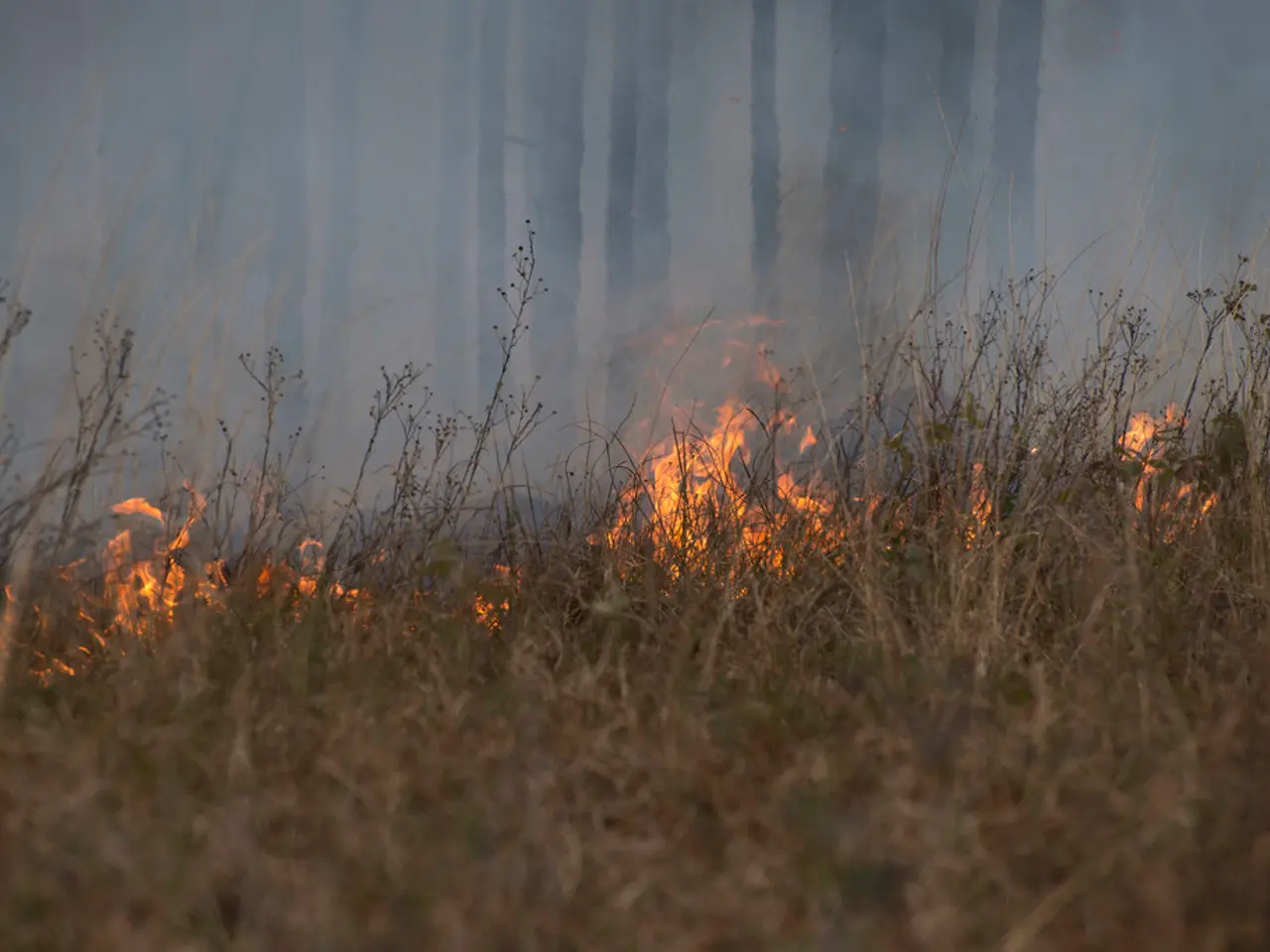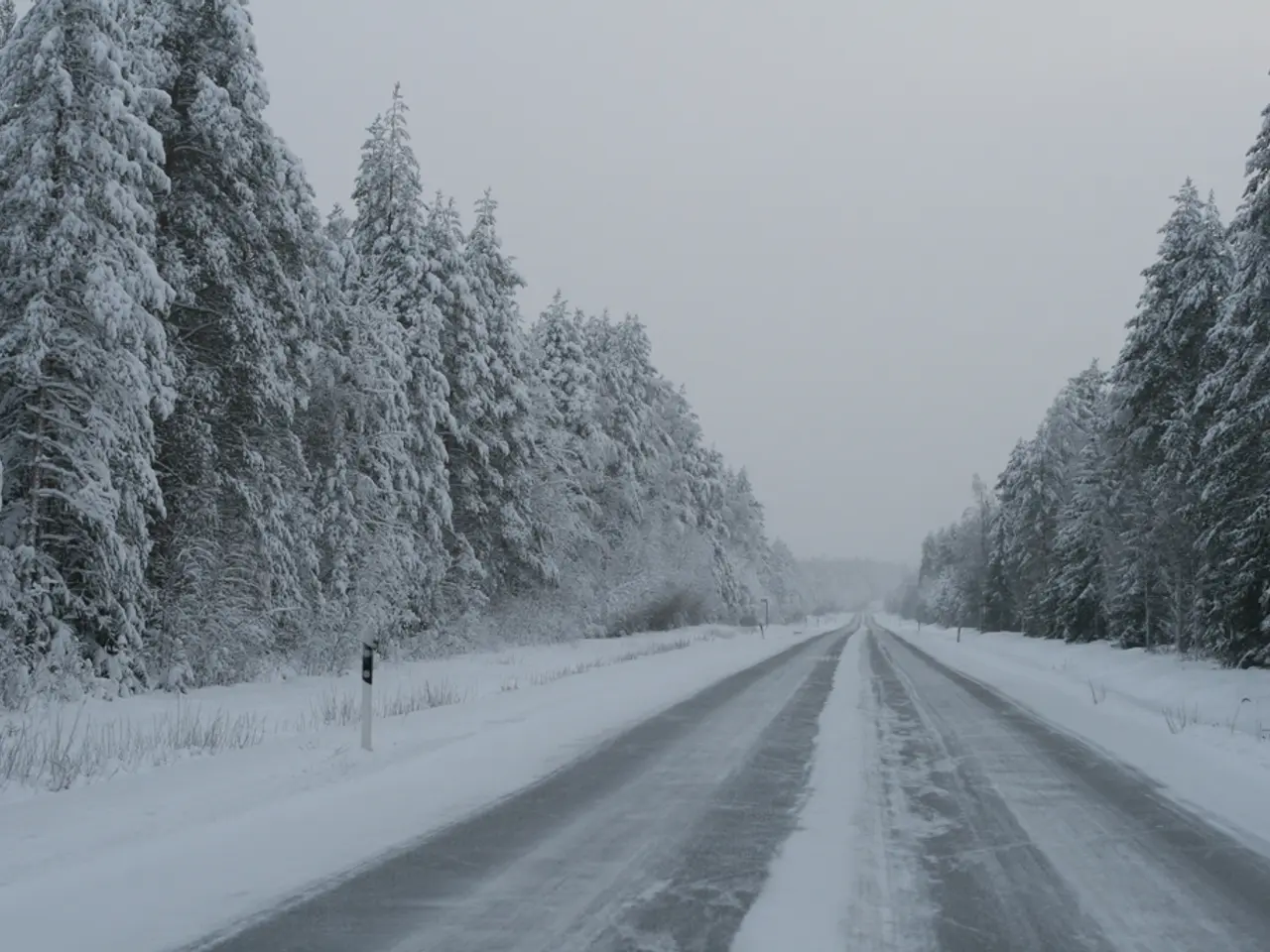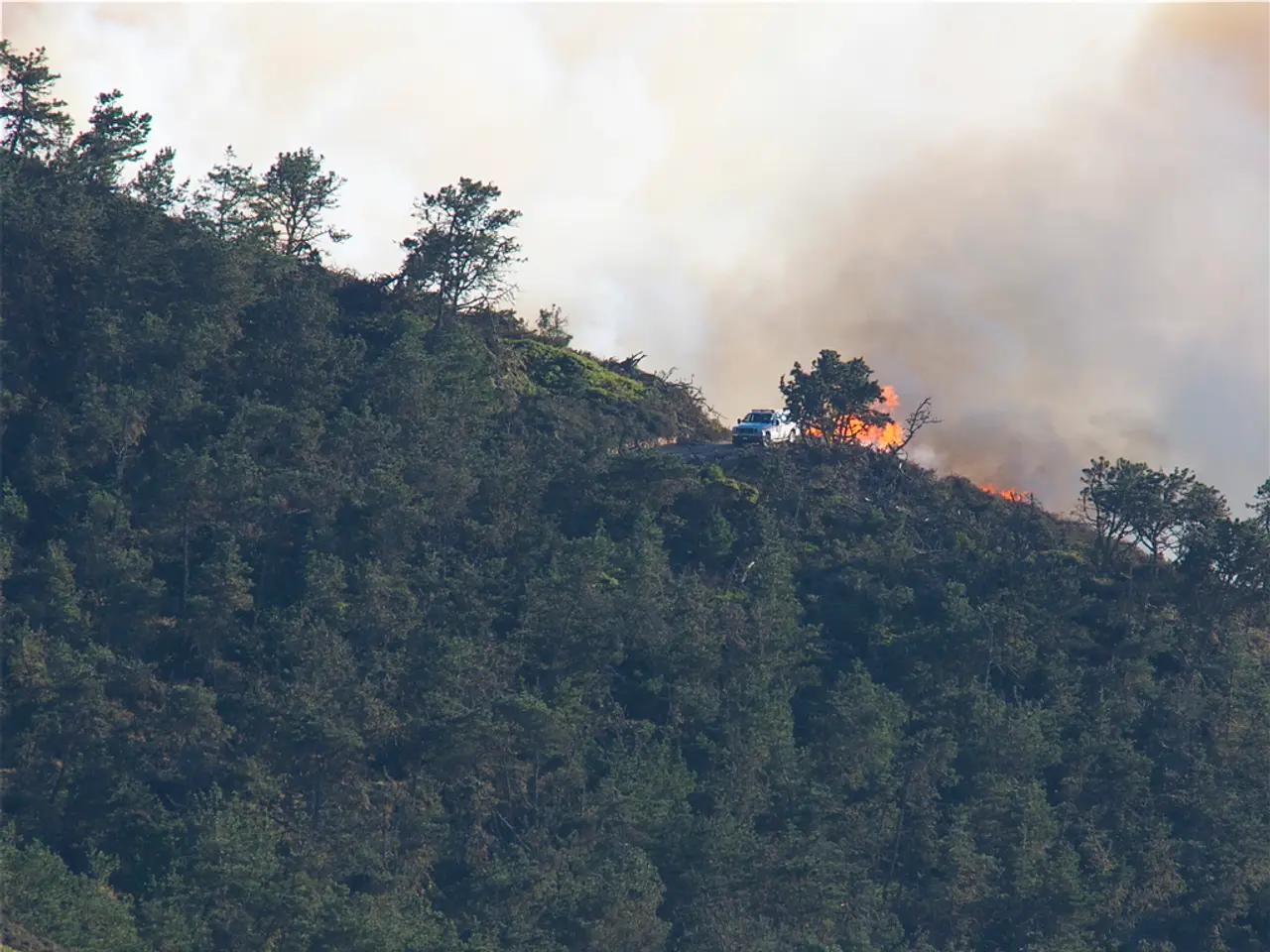Unrest following forest blazes - Anticipation for precipitation
In the heart of Eastern Germany, the forest fires on the Saalfelder Height in Thuringia and Gohrischheide at the Saxony-Brandenburg border continue to pose a significant challenge.
The fires, which have been raging since Wednesday, have already consumed approximately 2,100 hectares, equivalent to about one tenth of the area of the city of Chemnitz. The situation in Gohrischheide, spanning 2,800 hectares, remains critical. Gohrischheide, located in northern Saxony, is almost completely burned out, according to district administrator Ralf Hähnsel.
The district administrator also stated that the forces are exhausted, with around 550 personnel on site on Sunday afternoon. To aid in the firefighting efforts, four extinguishing and one reconnaissance helicopter were in operation on Sunday. However, helicopter flights were suspended on Sunday morning due to the need for personnel and heavy equipment in the peripheral areas.
In a bid to enhance firefighting effectiveness, unmanned extinguishing robots have been deployed. These advanced machines, such as the Thermite RS1, have proven to be highly effective tools in managing forest fires, particularly in hazardous and complex environments.
Their design and capabilities allow them to operate safely and efficiently in areas that are dangerous or difficult for human firefighters to access. They are built with strong, construction-grade materials and tracked mobility systems that enable them to traverse tough terrain and stairs.
These robots are controlled remotely and provide real-time high-definition and infrared video feeds. This allows operators to assess fire conditions and maneuver the robot without being physically present in danger zones, significantly reducing risks to human life.
The Thermite RS1 can spray up to 1,250 gallons per minute at high pressure (200 psi), enabling it to douse large fires effectively. Its water delivery system can cover a wide area, which is critical in forest fire management.
With features like a 24 hp diesel engine and the ability to operate for up to 20 hours without refueling, these robots are capable of sustained firefighting operations. Optional attachments like foam nozzles also expand their functionality depending on fire type or terrain.
In environments with risks like unexploded ammunition or landmines, specialized robots equipped with robotic arms, cameras, and remote detonation capabilities can safely detect and neutralize explosives. This capability is crucial for firefighting in former conflict zones or military training areas where unexploded ordnance may be present.
Unmanned aerial vehicles also play a vital role, quickly detecting fires in remote or difficult-to-access areas, operating in low-visibility conditions, and providing coordination data. Technologies like NASA’s ACERO project facilitate safe drone operations in rugged terrain and improve situational awareness and response coordination.
Overall, unmanned extinguishing robots enhance firefighting effectiveness by improving safety, operational reach, endurance, and the ability to manage complex hazards including unexploded ammunition. They allow fire management teams to reduce water waste, extend operational hours, and maintain safer distances from dangerous environments that would otherwise threaten human firefighters.
The weather is hoped to be cool and moist to aid in extinguishing the fires. Rain is forecast for Monday and Tuesday, but whether it will reach the forest fire area is uncertain. District administrator Marko Wolfram (SPD) expressed optimism about the fire in the area between Großneundorf and Limbach, but did not specify the current status.
Despite the challenges, the use of advanced technology like unmanned extinguishing robots is proving to be a valuable asset in the ongoing battle against these destructive forest fires.
- More advanced environmental-science, such as the use of unmanned extinguishing robots, could potentially aid in managing the ongoing forest fires, enhancing firefighting effectiveness and reducing risks to human life.
- As the forest fires continue to threaten the regions, the weather forecast indicates a hopeful change with cool and moist conditions predicted for the upcoming days, including rain on Monday and Tuesday.
- In the recovery phase of combating the forest fires, science, particularly weather-forecasting, will play a crucial role in anticipating the effectiveness of rain on extinguishing the fires and predicting favorable conditions for environmental-science interventions in the burned-out areas.








